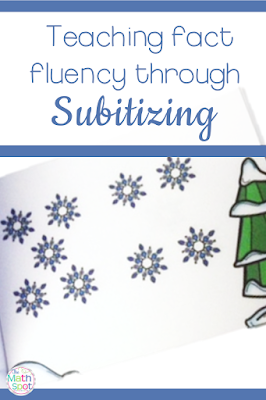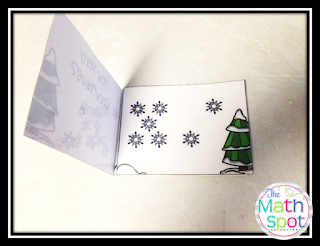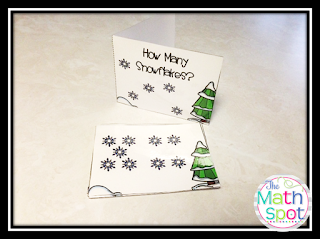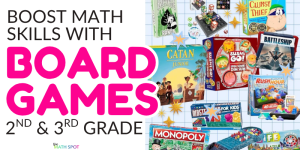This post contains affiliate links. This means that when you make a purchase, at no additional cost to you, I will earn a small commission.

Last summer, along with a few other math bloggers, I did a book study on the book Teaching Student Centered Mathematics By John Van de Walle, LouAnn Lovin, Karen Karp, and Jennifer Bay-Williams. Chapter 8 revolved around developing number sense and outlined a series of important number relationships. One of these number relationships includes benchmarks of 5 and 10. When we return from break I will be focusing on benchmarks of 5 and fact fluency with 5+ facts… but maybe not in the way you would expect.
Questions and prompts will include:
*How many snowflakes do you see?
*How do you know?
*What parts do you see in the picture?
*Could you write a number bond that shows those parts?
*What would the total be?
*What equation matches the snowflakes and your number bond?
Another variation of this activity will include flashing a dot picture and then asking students to reproduce the picture using bingo dabbers or Q-tips and paint. They could then create a number bond and number sentence that match what they know.
Finally, I would end a lesson by throwing in some 5+ flashcards mixed with other facts that they know such as 1+ or 0+ facts. I do want my students to become automatic in their facts and these activities will allow them to be automatic, however, I never want my students to overgeneralize a new understanding. If you want to read more on how I strategically use flash cards you can read this post here.
**The snowflake 5 facts activity highlighted in this post is a part of my winter themed math centers for first grade students found HERE*






